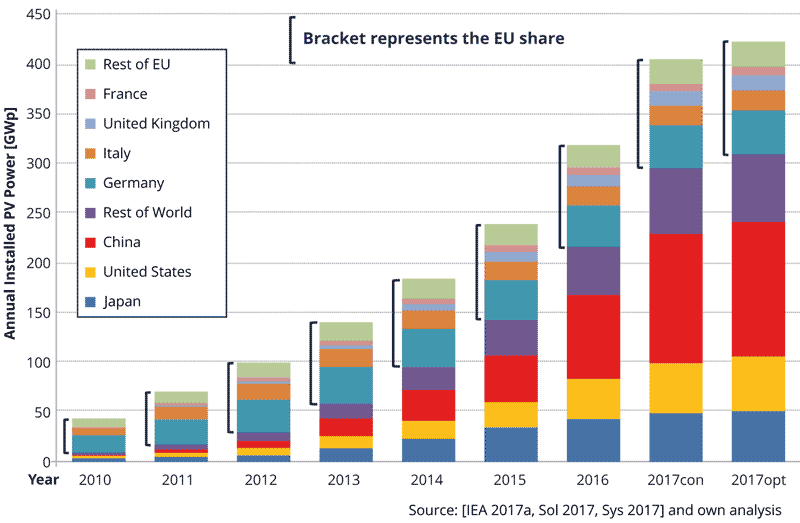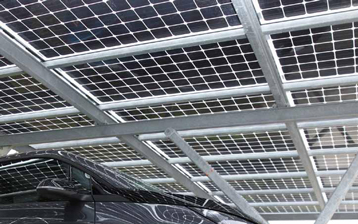Mobility of objects and people requires energy and technology for displacements using renewable energy that already exist.
Zero emissions form zero emissions
Electric mobility can be a connected system to the production of renewable energy and, thanks to an efficient and active management of charge and discharge processes, it is possible to bring huge economic and environmental advantages.
Cumulative PV installations from 2010 to 2017
» The PV installations are growing very fast in some countries, as can be seen in the following graph from the PV Status Report from Joint Research Centre (JRC).

Self-produced energy from renewable sources to recharge the electric car
Usually, self-consumption in photovoltaic systems is very low (around 30%). This indicates that there is a good quantity of energy that could be potentially used for electric vehicles’ charging.
Considering an average travel distance for an electric car of about 8km/kWh, if you hypothetically own 50% of self-produced energy from the photovoltaic system, you can travel remarkable distances with your vehicle, as it can be seen from the table below.
» The data shows that, for instance a PV system installed in Milan (Italy), with only half of the energy produced in an year, can feed an electric car for a travel of about 30.000 km with zero emissions.

Charging management
In order to guarantee the use of energy form the PV system, it is important to manage the charging process as well as optimize the availability of the renewable source.
Systems that activate the charging when there is free green energy are already in the market. However, even if electric vehicles are devices that absorb energy, they can also cede it, if needed, making the global energy management more efficient under a smart city view.






